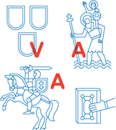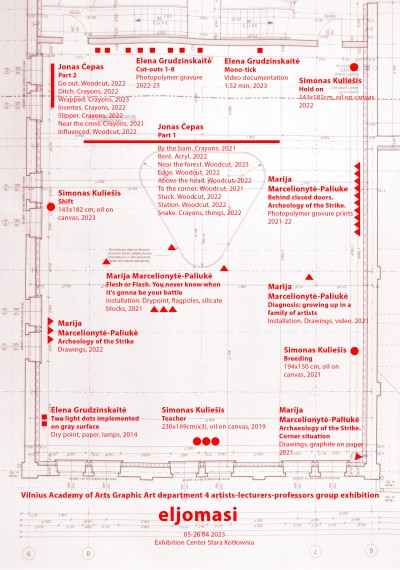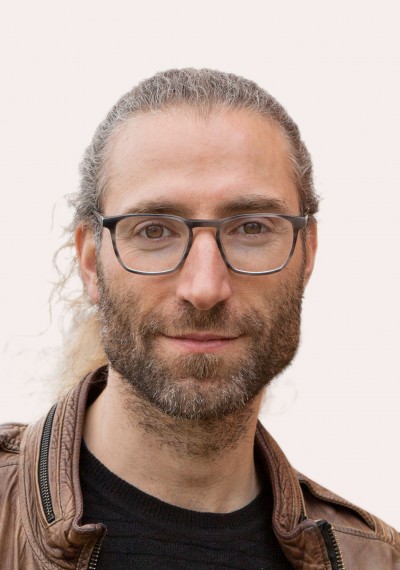Visual stories from the Kintai Arts residency
Ieva Babilaitė-Ibelgauptienė
On 11-24 June, the Kintai Art Residence hosted the project "Kultūros Skūnė" with the participation of 5 students of the VAA Department of Graphic Arts - Elzė Milašiūtė, Kornelijus Ražanskas, Luka Dominyka Misiūnaitė, Darija Podluzhna, and Palina Ramashka, as well as the curator of the residence and the exhibition - the lecturer at the VAA Department of Graphic Arts Ieva Babilaitė-Ibelgauptienė.

From the notes:
It's still not raining, we're drawing-constructing again, thinking - reflecting, but in fact we're playing with texts in the midst of floral tablecloths. Can this background influence our visual decisions? Looking at the drawings, yes.






One of the first tasks is to construct-fix the text by "playing".
That is, to write the associations that arise by looking at specially designed drawings, the environment around us, people we meet, photos from the last century, listening to stories, looking at the museum exhibition, consuming books, watching birds making different sounds, etc.
In the Kintai Art Residence, we found the right soil for the birth of, according to C.G. Jung, "the miraculous image".
Working together, in a group of 5 students and a teacher, ideas were exchanged and visual narratives were refined. Constant searching, experimentation, and a little bit of suffering in the search for a solution, became an integral part of our creative process.




What happens when you enter a certain area and find yourself surrounded by certain people? First of all, you are defined by a time - the date of the exhibition - and a task. The work becomes intense and concentrated. Then you realise that being " constrained" in a short period of time you can, and do, create an interesting visual story.
One of the most interesting experiences was visiting the Vydūnas Museum. We looked at old photographs and publications, and listened to the stories of the museum's director Rita Tarvydienė and the museum's museologist Reda Cirtautienė about Vydūnas, his surroundings and living conditions, and about the city of Kintai.

On the fifth day of our work at the residence, the visual signs were slowly becoming clearer as we observed the local signs. The images were consistently constructed by listening to the stories - the living testimonies of the war and the post-war period - shared by the old inhabitants of Kintai. The accumulated experience allowed to rethink and visualise the stories.
Our artistic vocabulary was enriched by newly discovered forms, names, Vydūnas' words, and stories we heard.




The arsenal of tools grew day by day, and Vydūnas's words, which at the beginning seemed to be questionable - unusable - became more and more a part of us and a link between the visual stories we tell.
To develop their narrative, students Luka and Elzė recorded a conversation with Mr. Henrikas Cyrulis, who, at the age of 91, talked about the events that took place in Kintai during the war and the post-war years. By the way, this story, recorded and revised by the students, will remain in the archives of the Vydūnas Museums.
A visit to the Vydūnas Museum inspired Kornelija Ražanskis to create the book-object "Givata". Especially Vydun's attitude to the signs and auras that surround a person. Kornelijus shaped the narrative with humour. He applied the metaphor of a bathhouse with passable rooms to his story. He depicted a person bathing and used colours to convey the change in temperature. And when the character reached a certain degree of heat, he would travel to the room of enlightenment.

Kornelijus writes: "I created this tunnel book with the popular 19th century peepshow books in mind, which were used to commemorate ceremonial occasions or places of interest, but I turned my gaze to the writings of Kintai and Vydūnas. I was interested in the light reflected by coloured paper as an intangible layer, and how to overcome it to create a visual experience."
Luka Dominyka Misiūnaitė's book "Bitiuliai" was inspired by Vydūnas' texts, his way of writing, and the signs and letters no longer used in the Lithuanian language. Luka created new names and did it so skillfully that it seemed she had found them in the local encyclopedia of those times. For the visual construction, she relied on a variety of birds and old photographs from the life of the Kintai community.

Luka writes: "I was working on a story about the Kintai (bird) community. I couldn't remember many bird names, so I started to create characters based on the names of the people who lived in the town - the spotted curlew, the lapwing, the white-cheeked woodpecker, and others - inspired by their memories, their fates, and their relationship with local history. In the process, listening to the birds chirping became intertwined with Vydūnas's deciphering of the language, and my characters spoke in the lovely language of 'bitiuliu'."
Elzė Milašiūtė's wordless book "Silently Falling Down" is a visual narrative constructed by listening to the sadness of a Kintai resident. In the form of a leoporella, Elzė's choice of visual language perfectly conveyed the events and feelings of the time - the presence at the time of the fire and the despair.

Elzė writes: "My book was inspired by the story of Henrikas Cyrulis, a local resident of the town, about World War II and the retreat of the front through Kintai. His story resonated very well in the context of today's times and, as if from the twists and turns of memory, brought back images for my book. Therefore, inspired by the dark, organic colours of nature and the German architecture that surrounded us in the town, I created a book of illustrations about the war through the eyes of a child. The book is wordless, but the colours and tonal gradients convey the feelings of the characters and the tension of the situation."
The title of Palina Ramashka's book is "Surveillance". Palina took a pair of binoculars with her to the Kintai art residency as her main working tool. Observing the birds, she recorded the traces they left in her book, thus making sense of the daily ritual of the connection between water and birds.

Palina writes: "My book was born thanks to a small bird - a river gull - who lives near the sea in Kintai.
It wanders chaotically back and forth all day long, leaving its many footprints in the sand. Over time, this pattern becomes more difficult, more interesting and more beautiful. Until one day, a wave of the sea washes them away. Then it starts all over again.
I found this series interesting not only as an observation of nature, but as a beautiful metaphor for what happens in human life."
Darija Podluzhna's visual story is for those who can see and those who cannot see. Darija has bound various textures and watercolour shapes into freely interpretable pieces - leporellas, entitled "Memories in notes".

Darija writes: "I don't remember the last time I walked so much and just enjoyed the world around me. And maybe for the first time in my life I watched the birds. And as it turned out, birdwatching is a very interesting activity, during which you learn to pay attention to some small details. And what is more important you learn to observe. Observe the relationship between nature and man, the manifestation of life in all its forms, the emotions that appear in the process.
Therefore, all my works, all these books are small short stories that happened or could happen here. They are my notes on my time in Kintai. And this is my attempt to capture my memories and convey those light, bright, sunny feelings that people can feel here."
Ieva Babilaitė-Ibelgauptienė „Kintai then and now“
The idea of developing a visual story is like a stumbling block that is encountered unexpectedly, discovered or experienced, and then polished to a legible idea, usually without words, and can be identified as a narrative. And if that narrative is accompanied by a text, then the drawing becomes a secondary or even tertiary text, often more important than the written one. When I think about a future book, I usually ask a question, and when I draw, I look for an answer, but this time I was just observing, listening and recording.









The process of creating a book-object-history can go on and on right up to the day and hour of its presentation, and once it is in the eye of the beholder, it can take on a completely different or yet another interpretation.
On 21st of June happened the opening of the exhibition "Paukshtiam-s-price" by the participants of the project "Kultūros skūnė" at the Kintai Art Residency Gallery. We presented artworks, books-objects created during the project.














In the opinion of the project participants, the time at the Kintai Art Residency passed very quickly and very meaningfully. The unique and inspiring atmosphere of Kintai is etched in our minds, and the experience gained during the project will be reflected in everyone's work.
The experience in Kintai is best illustrated by an old photograph of a pyramid formed by children, found in the Vydūnas Museum. It is as if it is constantly changing and thus influencing not only the work of the artists who have come to the residence, but also the lives of the local population.
.jpg)
For the opportunity to create, experience and learn, surrounded by the extraordinary nature, we would like to thank the creators of this project: Audra Juodeškiene, Prof. Marija Marcelionyte, Vilnius Academy of Arts, Iceland Liechtenstein Norway grants, Kintai Arts Residency, VDA Project Department.
P.S. Other events and meetings during the residency.
We visited the exhibition „Antropoceno tema Pamario gamtos kontekste“, attended the film screenings „Trumpas kinas. Realybės žvilgsnis“, listened to „Kintai music festival“ the opening concert „Baltijos malda“.
We participated in meetings and presentations of our work to the community "Artists' Conversations" which included: Ieva Babilaitė-Ibelgauptienė on "The Visual Structure of the Book, Its Meaning and Relationship to the Reader" and Karen Vanhercke on "The Visual Method of Thinking in the Exhibition "The Anthropocene Theme in the Context of the Pomeranian Sea Region".
"During the meeting, I talked about the creation of books, the power of visual content and the therapeutic function of art" (I. Babilaitė-Ibelgauptienė)
We took part in a public discussion with Karen Vanhercke and the exhibition's creators Nazli Moripek, Younghun Kim, Kristina Mažeikaite, Martynas Pekarskas on the topic of the Visual Thinking Approach in the exhibition "The theme of the Anthropocene in the context of the Seaside". "During the "Skūnė" project, I led a workshop for schoolchildren in Dreverna" (I. Babilaitė-Ibelgauptienė)
















